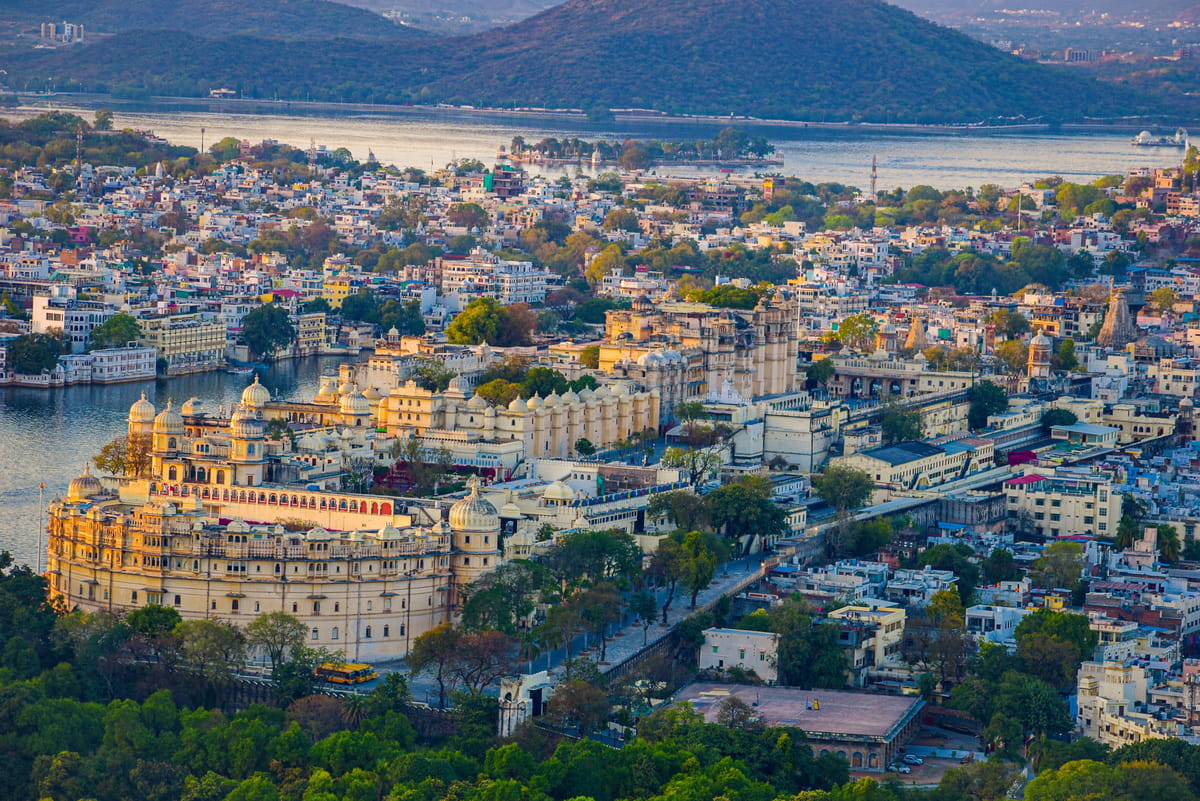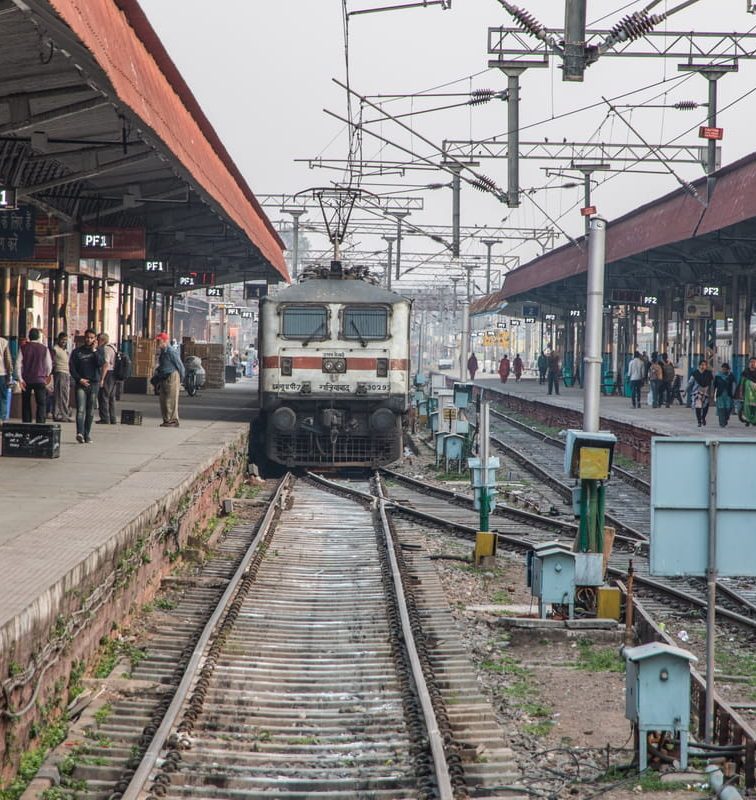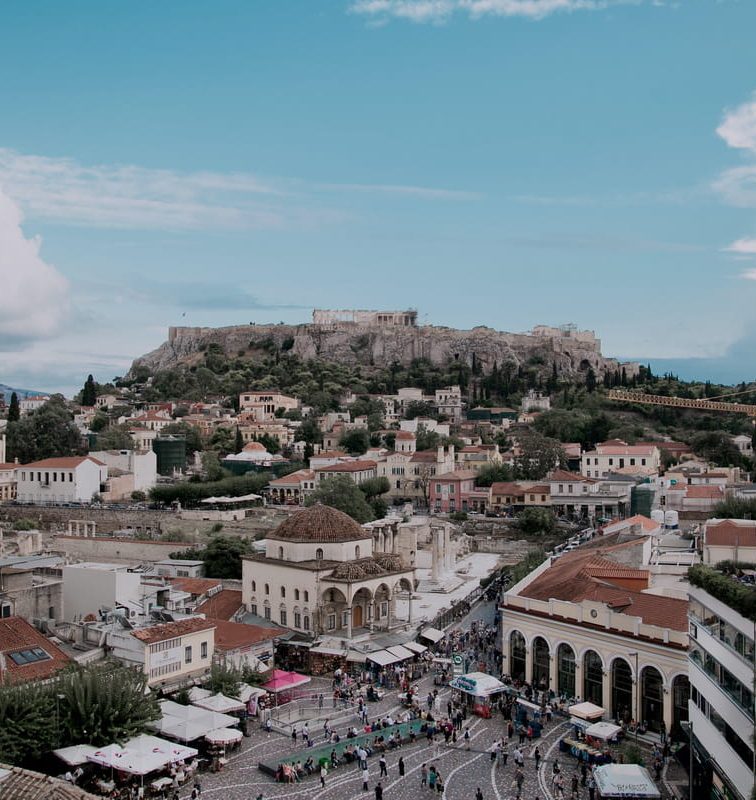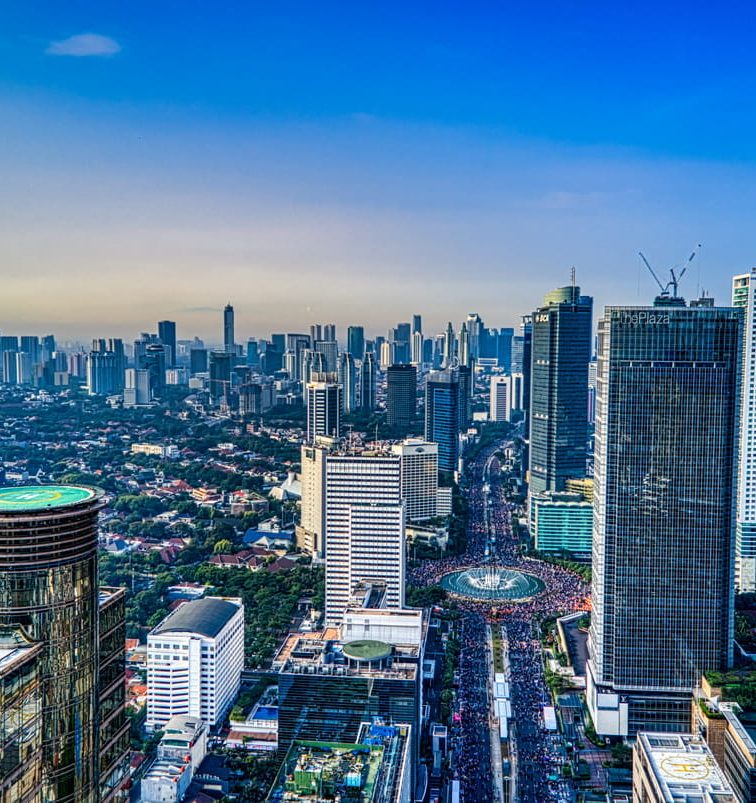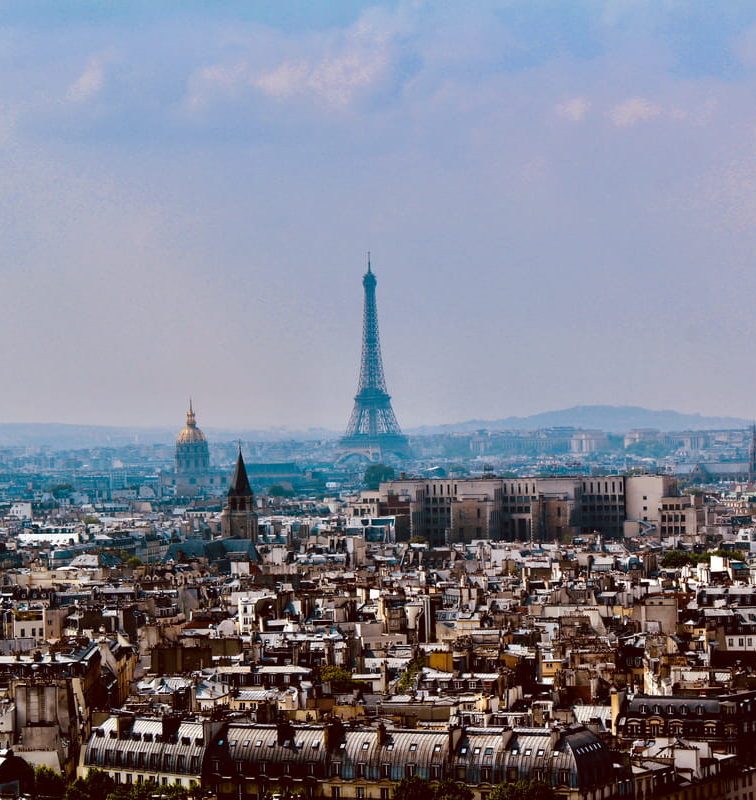Ah, craving something a tad more subtle but still packed with curiosity? No worries! Welcome to the enigmatic world of Udaipur, often dubbed the Venice of the East. Nestled in the grandeur of Rajasthan, India, this city is a cocktail of history, art, and some ridiculously stunning scenery.
Imagine palaces fit for royalty (because they were), lakes that mirror the sky, and legendary rulers whose stories have stood the test of time. Intrigued? You should be. We’ve got 35 fun facts about Udaipur lined up that will make you wonder why you haven’t visited yet. So stay tuned, there’s a lot to uncover!
1. How Udaipur Came to Be: The Maharana Udai Singh Origin
So, picture it: the year is 1559, and Maharana Udai Singh II is out on a hunting trip. But this ain’t your average day in the woods. Nope, he runs into a sage who lays some real wisdom on him. “Build a city here,” the sage says, pointing to the hills that would provide natural fortification.
And you know what? Udai Singh listens. The guy actually builds a city, which we now know as the stunning Udaipur. Talk about taking advice to heart, right? This place became the new capital of the Mewar Kingdom, and let me tell you, it’s been turning heads ever since.
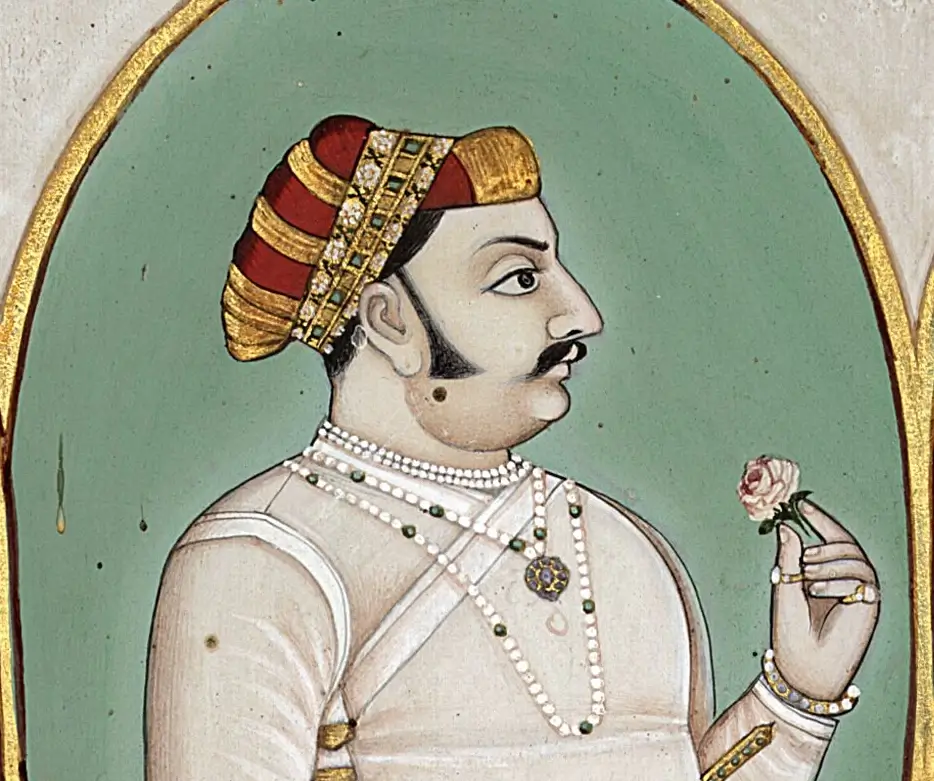
Maharana Udai Singh II. Image source: eternalmewarblog.com
2. Lake Pichola: The Artificial Marvel
Hold up, you thought Lake Pichola was a natural beauty? Think again! This lake is a man-made marvel, baby. Created in the 14th century by a tribesman named Banjara, this artificial lake had some practical roots—think drinking water and agriculture.
Fast forward to today, and Lake Pichola is the eye-candy of Udaipur. It’s not just a puddle in the ground; it’s a breathtaking backdrop that’s become an absolute must-see on any tours of the city. And yes, it’s as photogenic as it sounds.
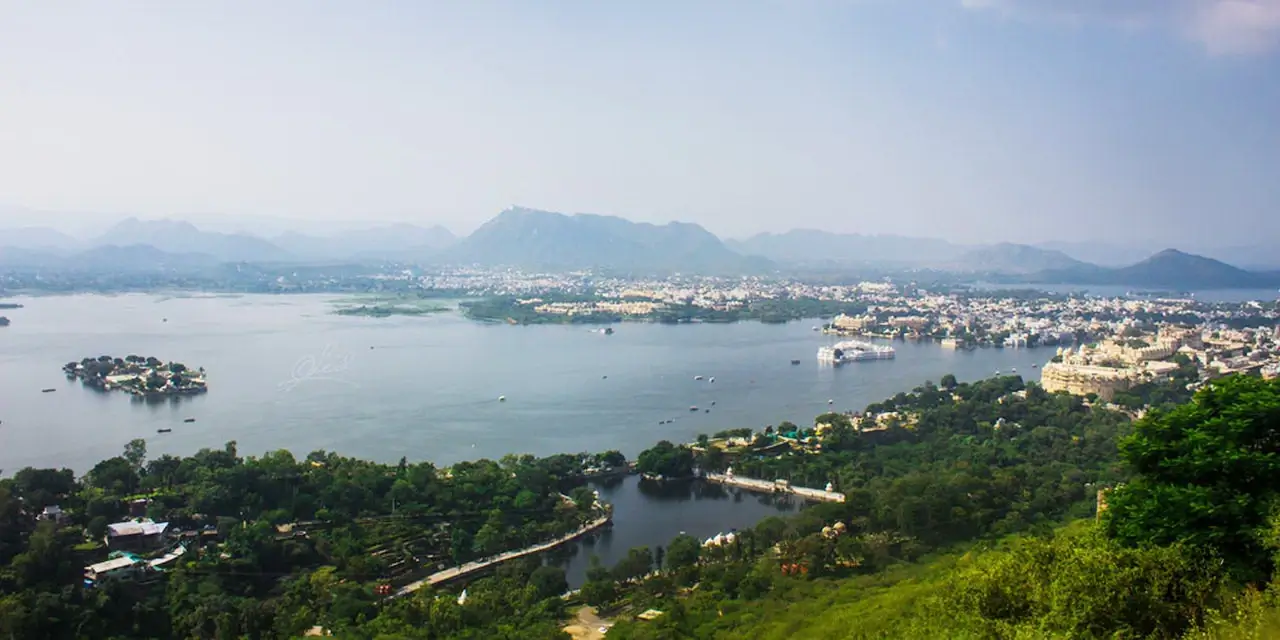
Image source: udaipurtourism.co.in
3. Venice of the East: The Unofficial Title of Udaipur
Let’s talk about Udaipur’s nickname: the “Venice of the East.” A lofty title, sure, but one the city has earned. Udaipur is basically the Venice of India, minus the Italian opera and plus a whole bunch of palaces.
Why the comparison? Well, just like Venice, Udaipur has got water, water everywhere. We’re talking lakes, places, and yes, even some romantic vibes that make this Indian city a strong contender for the most charming place ever. Trust me, you’ll want to see it to believe it.

Image source: tripsavvy.com
4. Once Upon a Time: Udaipur as the Mewar Capital
Before Udaipur stepped into the limelight, Chittorgarh used to be the original capital of the Mewar kingdom. But hey, change is the only constant, right? When Maharana Udai Singh II decided to follow that sage advice, he didn’t just build a city; he shifted the entire capital here.
Why the big move? Well, Udaipur offered a strategic advantage with its mountainous terrain, making it a tough nut for enemies to crack. So, this switch wasn’t just for the Insta-worthy lakes; it was a carefully calculated chess move in the game of thrones.
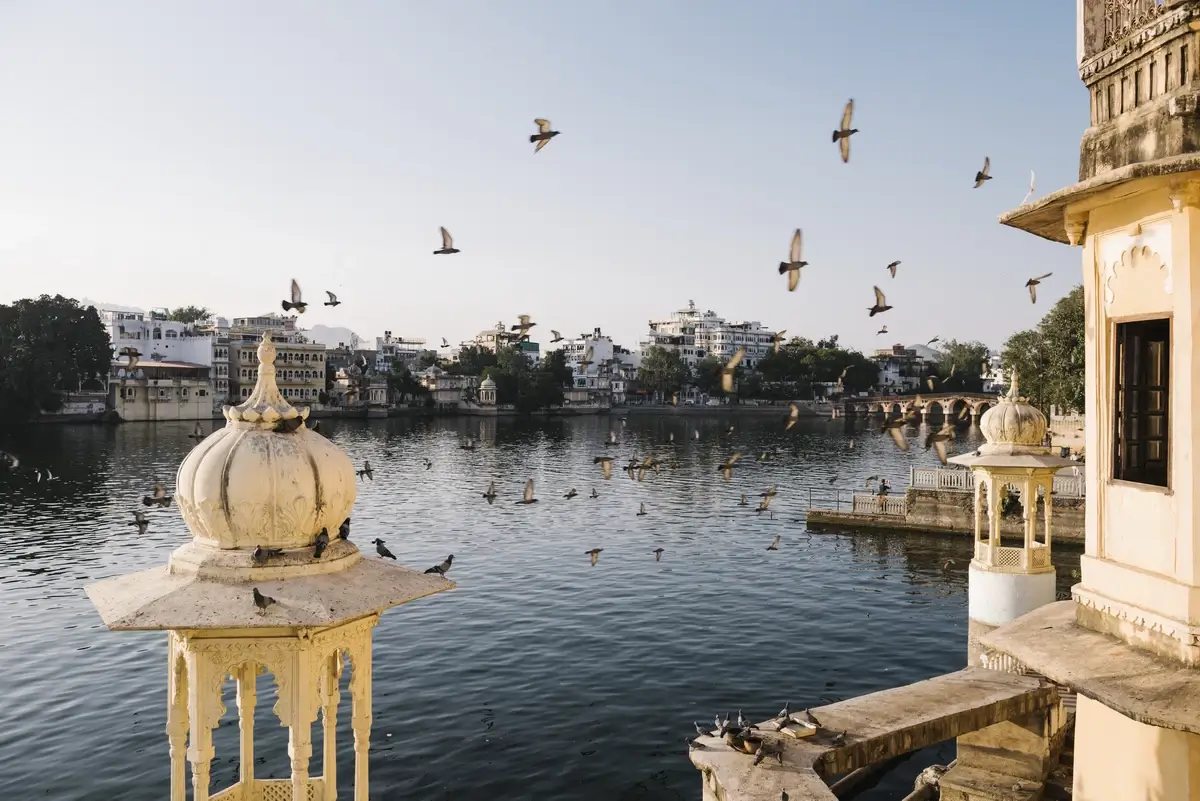
Image by rawpixel.com / Freepik
5. The Colossal City Palace: A Four-Century Build
Think your home renovation is taking too long? Imagine waiting four centuries! Udaipur’s City Palace wasn’t built in a day, or a decade, or even a century. This behemoth structure took about 400 years to complete, with contributions from several rulers of Mewar.
It’s like the Winchester Mystery House, but less creepy and more regal. Spanning 244 meters in length and 30.4 meters in height, the City Palace is a labyrinth of courtyards, terraces, and rooms. And it’s still standing tall, literally, as a testament to the craftsmanship of the era.
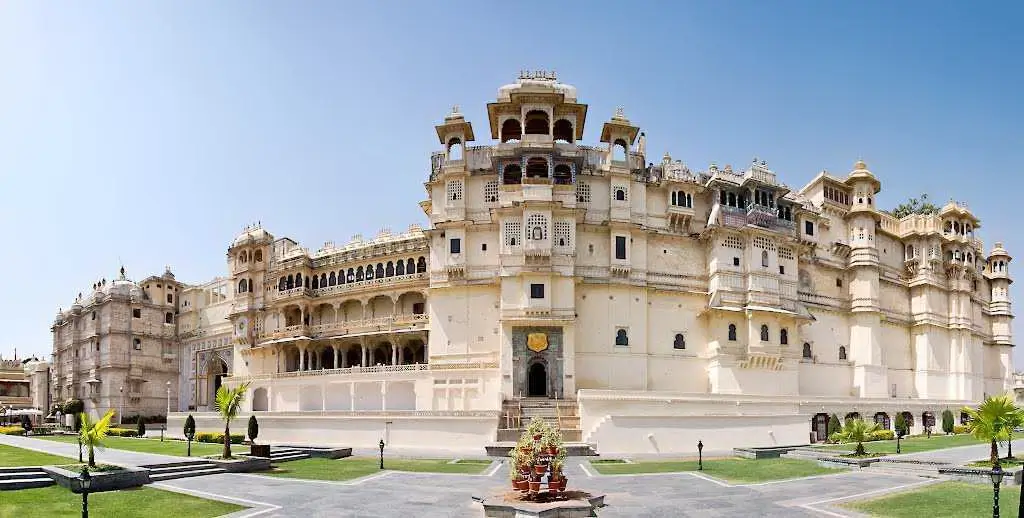
Image source: holidify.com
6. Lights, Camera, Udaipur! Filming Locales in the City
Udaipur has been a hotspot for filmmakers, both Indian and international. Remember the James Bond film “Octopussy”? Yep, some of its most iconic scenes were shot here. Indian films like “Goliyon Ki Raasleela Ram-Leela” also took advantage of Udaipur’s picturesque settings.
Its lakes, palaces, and winding streets offer diverse backdrops that make any director’s vision come to life. So, the next time you’re watching a movie and think, “Wow, that place looks amazing!”—it might just be Udaipur serving cinematic realness.
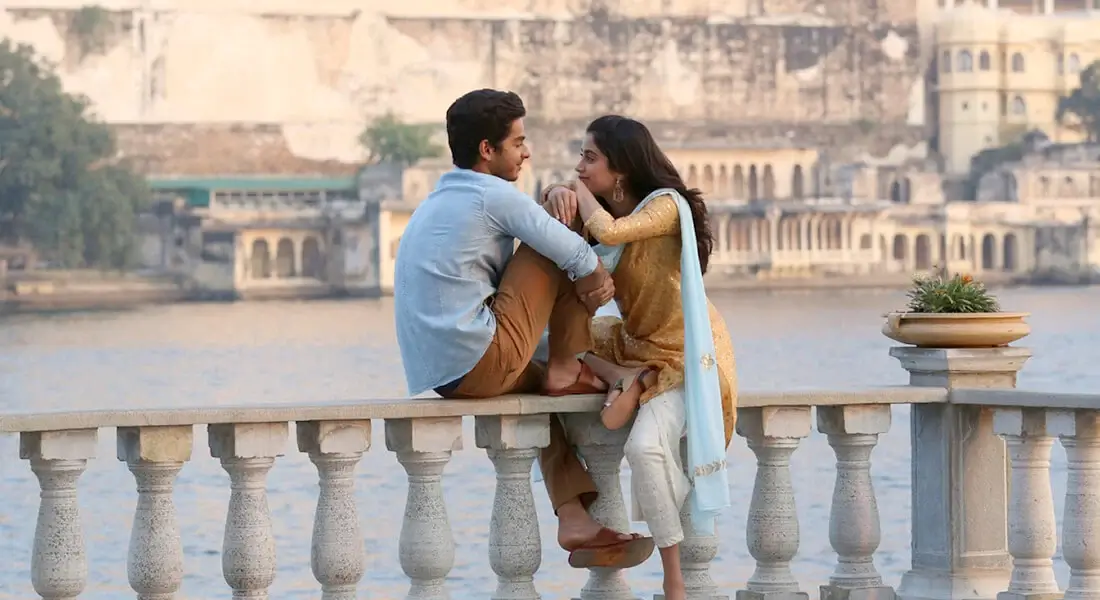
Image source: udaipurdarpan.com
7. Divine Design: The Splendor of Jagdish Temple
In a city full of palaces and lakes, the Jagdish Temple stands out for its intricate architecture and spiritual significance. Built in 1651, this Indo-Aryan architectural marvel is dedicated to Lord Vishnu and is an important pilgrimage site.
The temple isn’t just a place to offer prayers; it’s a masterpiece showcasing detailed carvings and sculptures. From the towering spire to the 50 pillars in the main hall, each element tells a story of divine design.

Image source: Wikimedia Commons
8. Educational Hub: Udaipur’s Focus on Learning
Udaipur isn’t just a tourist magnet; it’s also rapidly emerging as an educational hub in the region. The city is home to Mohanlal Sukhadia University, established in 1962, which caters to various disciplines from science to arts and business. According to the university’s annual report, it had over 60 affiliated colleges and over 20,000 students enrolled in the academic year 2019-2020.
The growth of educational infrastructure has led to a rise in student population in the city, both local and from other parts of India. This influx has had a knock-on effect on local businesses, from bookshops to eateries catering to the student demographic. It’s an often overlooked aspect of Udaipur that is increasingly becoming a defining feature of its character.
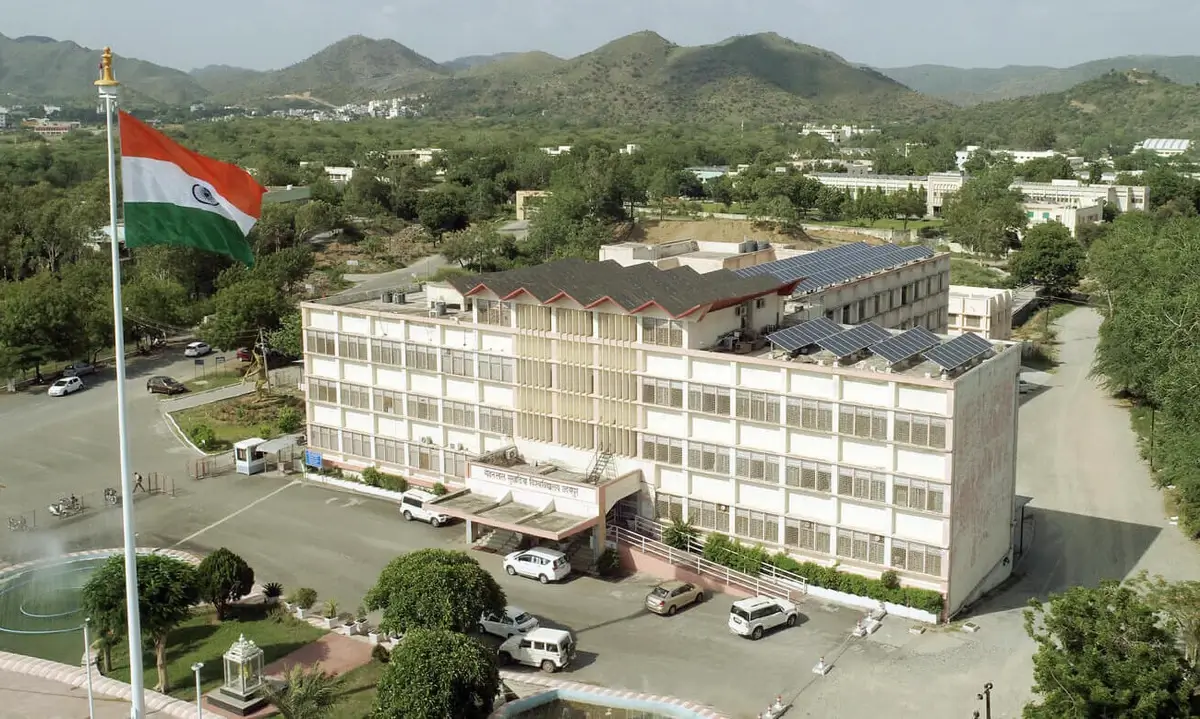
Image source: Mohanlal Sukhadia University
9. Color Me Blue: The Hue of Royalty
Ever noticed the blue tints on the houses in Udaipur? That’s no coincidence; it’s a nod to royalty! In ancient times, blue was a color reserved for the Brahmins, but the tradition has since been adapted more widely throughout the city.
So why blue? Aside from its royal connection, the color also offers practical benefits—it’s believed to keep homes cool in the scorching heat of Rajasthan. Aesthetic and functional, talk about a win-win!
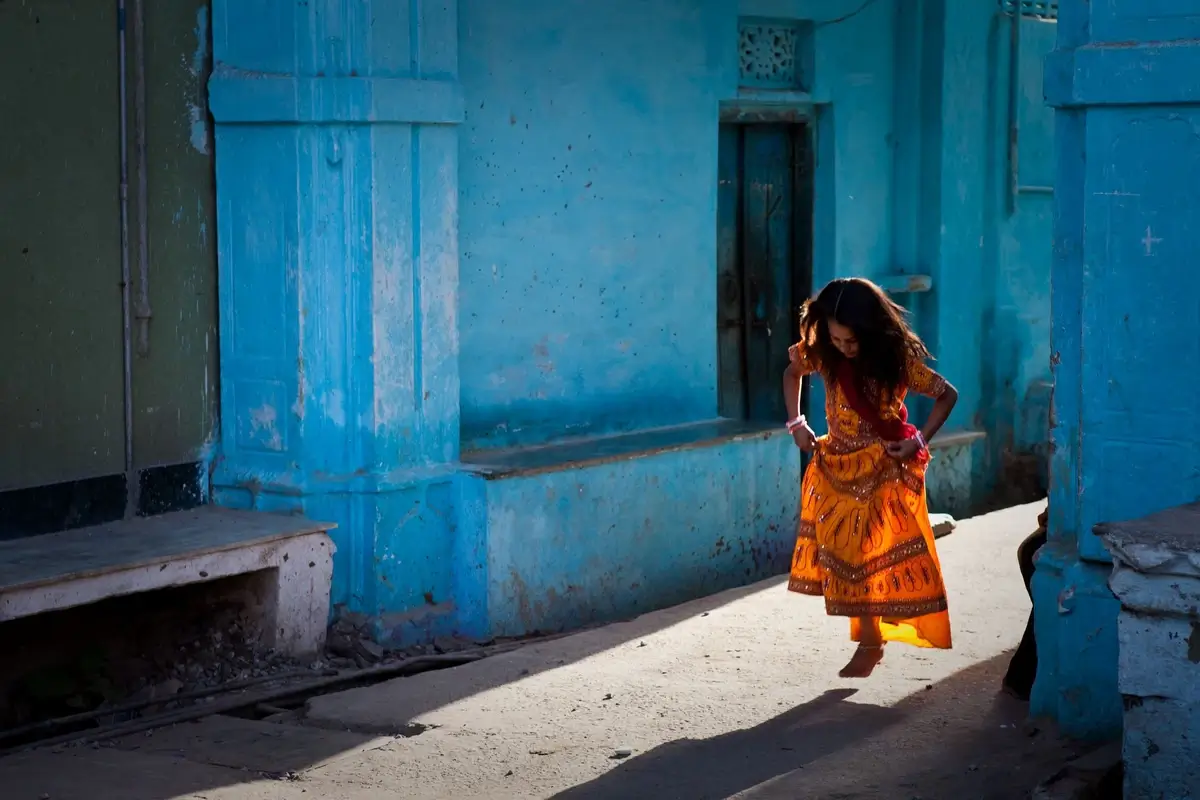
10. Udaipur Solar Observatory: A Quiet Giant
The Udaipur Solar Observatory is a hidden gem and one of the best solar observing sites in the world. The observatory, situated on an island in Fatehsagar Lake, ranks as the second best solar observing site globally. That’s right, second!
Why on an island, you ask? The water surrounding the observatory reduces air turbulence, making it a dream location for astronomers. It’s not just a nerd’s paradise; it’s cutting-edge science in action.
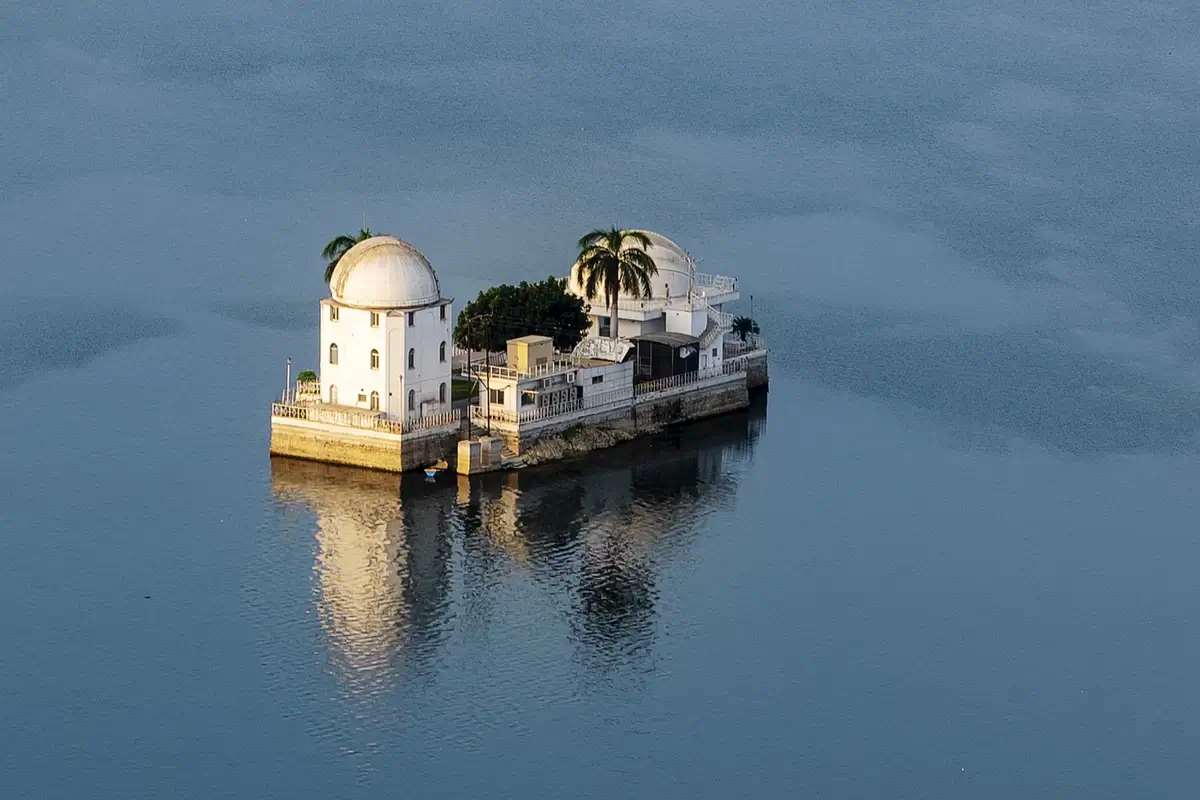
Image source: Wikimedia Commons
11. Bagore Ki Haveli: The Mansion Turned Museum
Nestled near the banks of Lake Pichola, Bagore Ki Haveli is not your average mansion—it’s a museum offering a peak into royal life. Built by Amar Chand Badwa, the Chief Minister of Mewar Royal Court, it was later turned into a museum that has more than 100 rooms displaying various items of the royal families.
Each room tells a tale, whether it’s the Queen’s chamber filled with royal artifacts or the room entirely dedicated to puppets. It’s a walk down memory lane, with a royal twist.
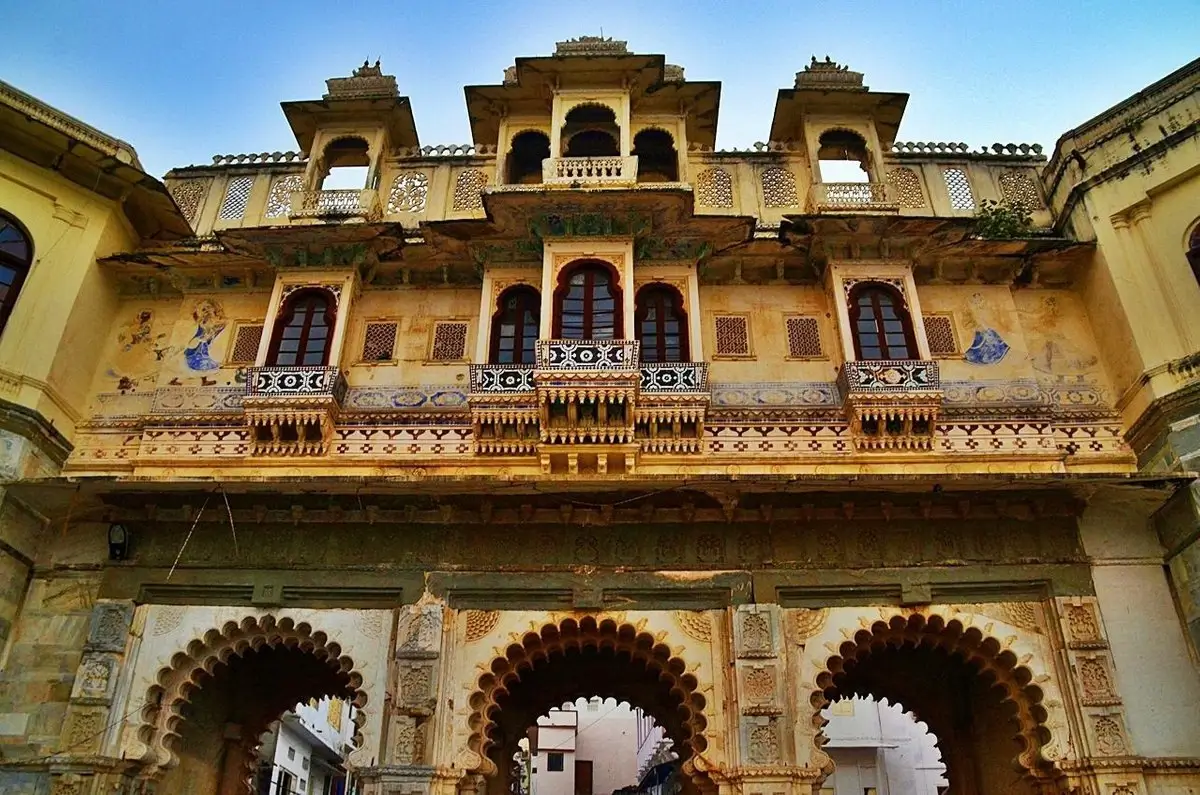
Image source: Bagore Ki Haveli
12. Lake Palace: Floating on Elegance
Ready to have your jaw hit the floor? The Lake Palace on Lake Pichola is a masterpiece that seems to float on water. Originally named Jag Niwas and built by Maharana Jagat Singh II in 1743, this marble marvel was a summer palace for the Mewar rulers.
Today, it’s a luxury hotel where you can live like a king, even if it’s just for a night. From boat rides to royal suites, it’s an epitome of elegance that gives you a 360-degree view of the city’s lakes and palaces.

Image source: i.pinimg.com
13. Haldighati: The Historic Battlefield Near Udaipur
Just 40 km from Udaipur lies Haldighati, a mountain pass that witnessed one of India’s most historic battles. The Battle of Haldighati took place in 1576 between Maharana Pratap and the Mughal emperor Akbar’s forces. The battlefield gets its name from the yellow soil, resembling ‘Haldi’ (turmeric).
While the battle was a defeat for Maharana Pratap, it’s his indomitable spirit and tactics that are remembered today. The area now has a museum and a memorial dedicated to the valiant fighter.
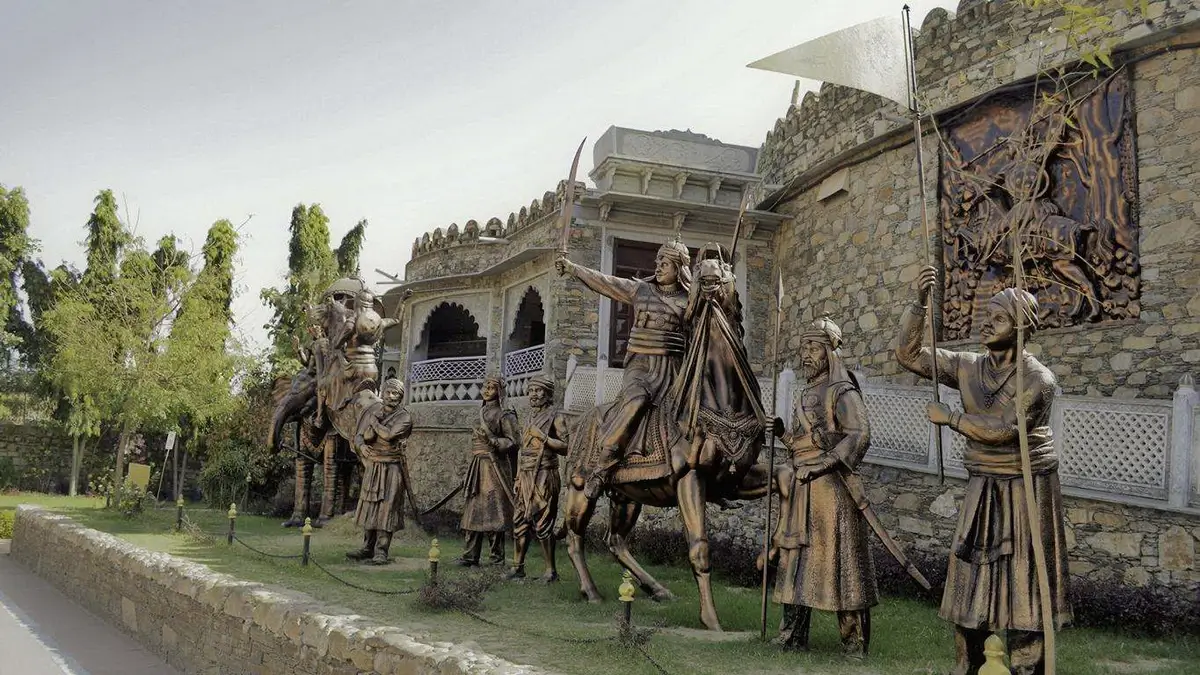
Image source: udaipurtourism.co.in
14. Sajjangarh Palace: The Monsoon Palace and Its Views
Perched on a high hill, Sajjangarh Palace, commonly known as the Monsoon Palace, is an architectural marvel that overlooks the cityscape of Udaipur. With its panoramic views, it has long been a place to observe the monsoon clouds, offering a celestial drama unfolding right in front of your eyes.
What’s fascinating is that the initial plan was for the palace to serve as an astronomical center. However, it ended up being more of a weather-watching station, a charming change in destiny, if you ask me.
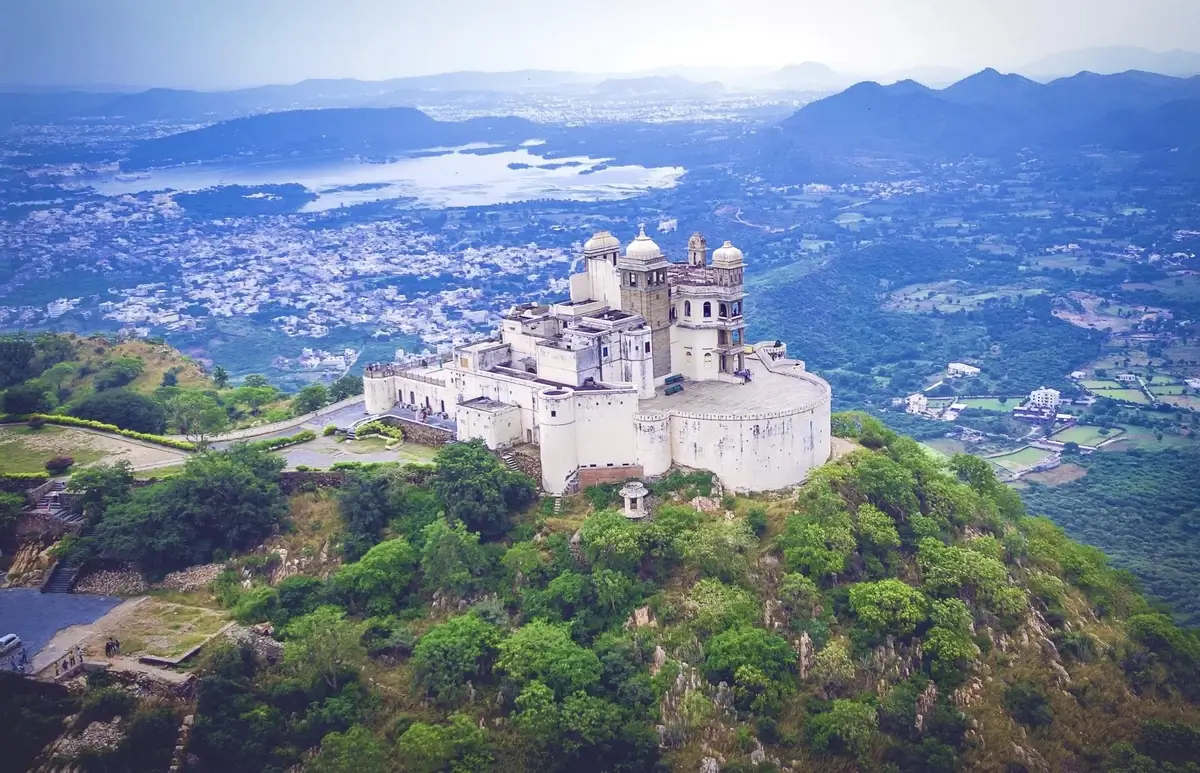
Image source: incredibleindia.org
15. Romantic Boat Tours: See Udaipur From the Water
Lake Pichola isn’t just a beautiful backdrop; it’s a historic waterway that dates back to 1362 AD. Created by a local banjara (gypsy), the lake was later enlarged by Maharana Udai Singh II in 1560 AD. Boat tours on Lake Pichola offer a unique lens into Udaipur’s history as you glide by landmarks like the City Palace and Jag Mandir.
But wait, there’s more! These boat tours aren’t exclusively for couples in love, contrary to the “romantic” tag. Family-friendly options abound, and some even include onboard dining. Offering an unparalleled view of Udaipur’s skyline, these boat tours have become an integral part of the city’s tourism sector.
16. Streets of Udaipur: A Walk Through History
When you stroll through the streets of Udaipur, you’re not just walking on asphalt; you’re treading on layers of history. Founded in 1558 by Maharana Udai Singh II, Udaipur’s streets have seen processions of grandeur, royal weddings, and numerous festivals. The city was designed as a complex web to perhaps confuse invaders, an old-school but effective security system.
The streets hold an array of architectural styles, from Rajput to Mughal and even some British influence, thanks to India’s colonial past. Stroll down the winding lanes, and you’ll likely bump into historic structures dating back hundreds of years.
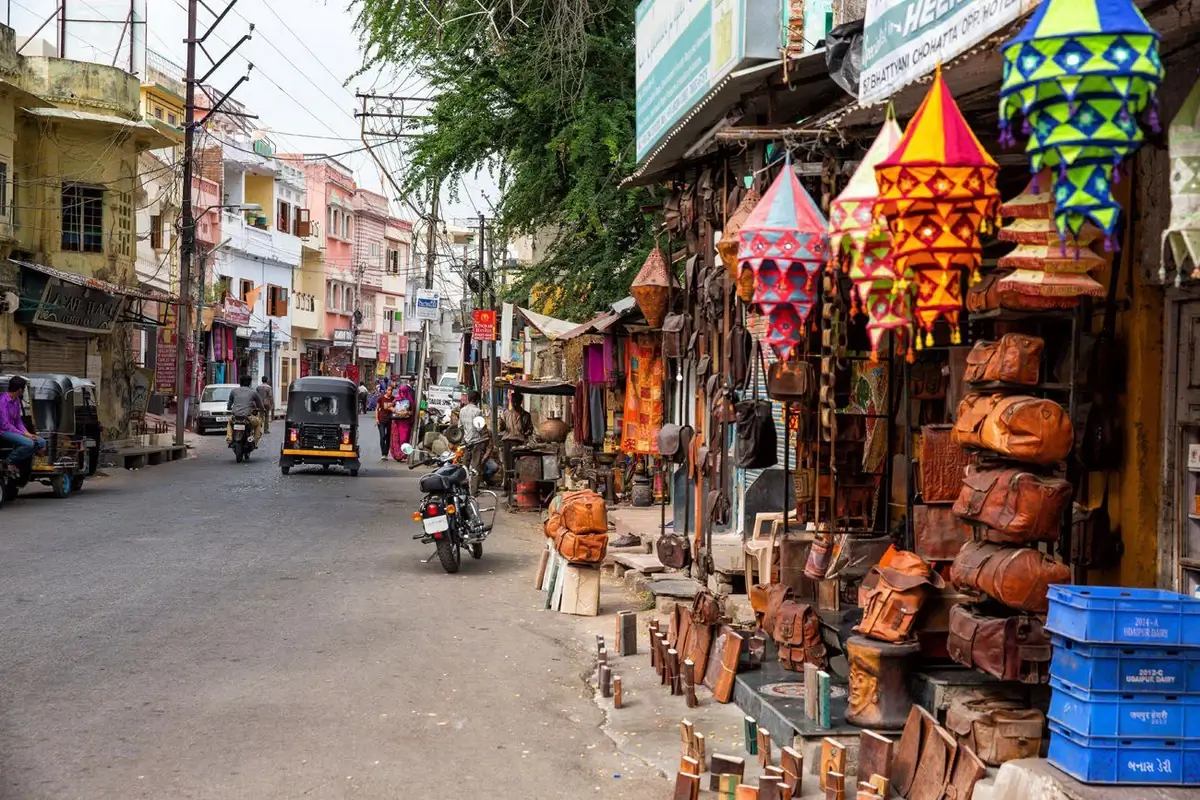
Image source: earthtrekkers.com
17. Marble Art: A Craft Rooted in Tradition
Marble art in Udaipur isn’t a recent trend; it’s a legacy that goes back centuries. The region of Rajasthan is rich in marble reserves, making it a natural hub for this art form. Historically, marble art has been a royal endeavor, used in building palaces, temples, and even in intricate inlay work.
Fast forward to today, marble art is a thriving industry contributing significantly to Udaipur’s economy. From tiny souvenirs to grand statues, the scale and detail of marble craftsmanship remain unparalleled.
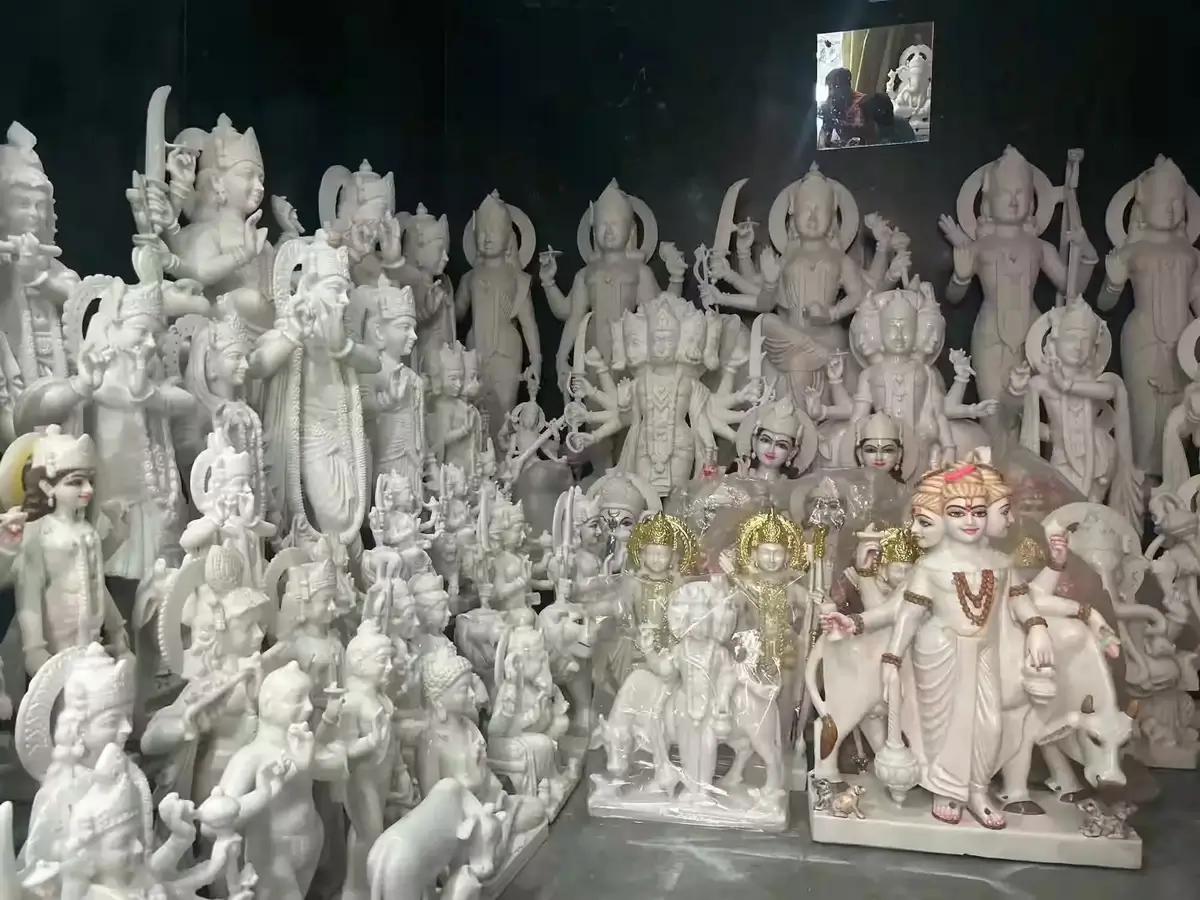
Image source: justdial.com
18. Jaisamand Lake: Another Man-Made Marvel
Lake Jaisamand, another artificial lake, was built in 1685 by Maharana Jai Singh. It was then considered the largest artificial lake in Asia. This man-made marvel spans an area of 36 sq mi and even has elegant marble steps leading to the water—a testament to Udaipur’s love affair with marble.
Surrounded by the Jaisamand Wildlife Sanctuary, the lake is more than just a pretty face. It serves as a crucial water reserve and is an essential part of the region’s biodiversity.
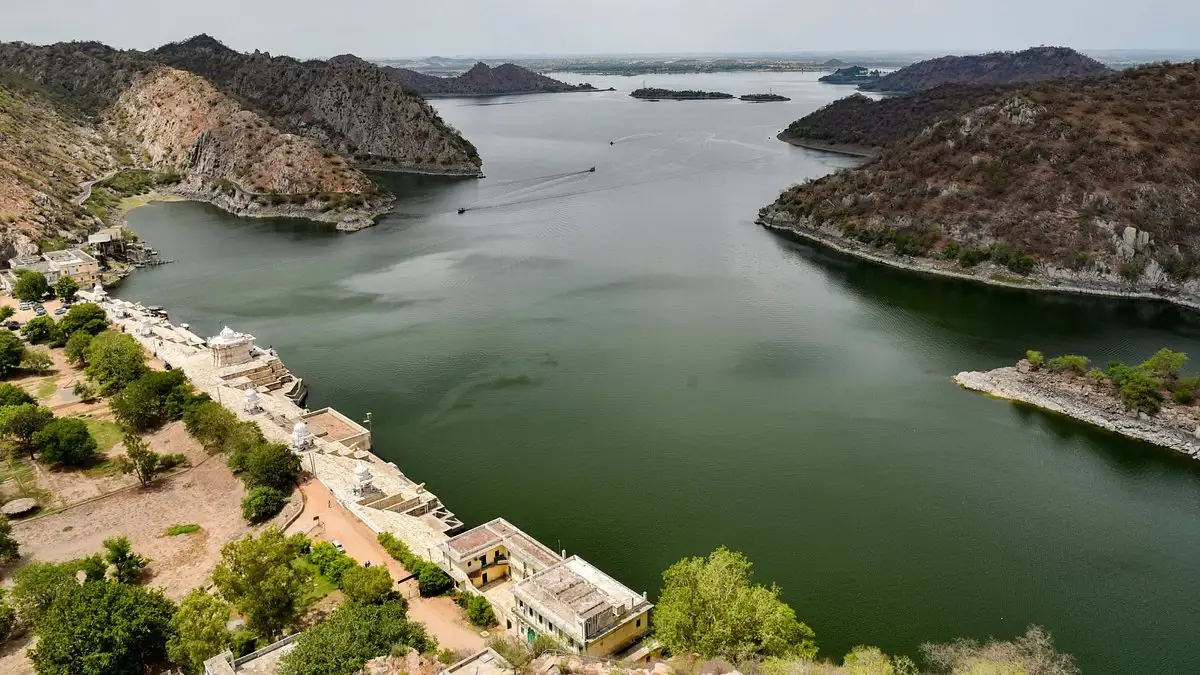
Image source: tripadvisor.in
19. The Miniature Painting: An Artistic Legacy
If you’re keen on art, Udaipur’s miniature paintings are a must-see. Originating from the Mewar school of art in the early 17th century, these paintings often depict scenes from Hindu epics like the Ramayana and Mahabharata. Known for their intricate details, these pieces could take weeks or even months to complete.
While traditionally these paintings were commissioned by royalty, today they are a popular souvenir and collectible item, speaking to the art form’s long-lasting appeal.
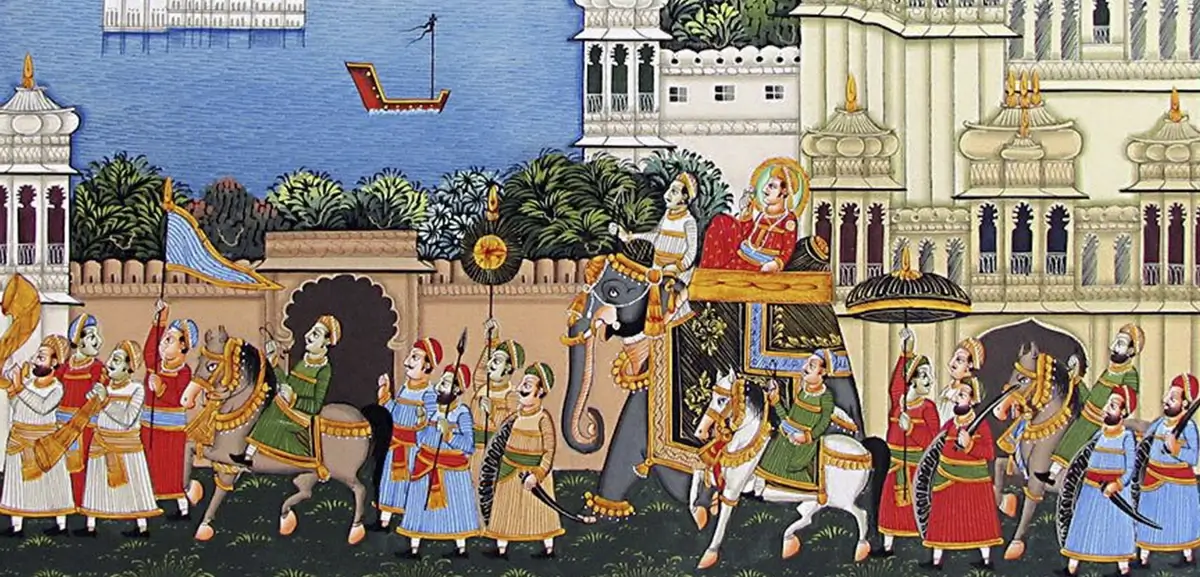
Image source: distinctdestinations.in
20. Crystal Clear: The Rare Crystal Gallery
Located in the Fateh Prakash Palace, the Crystal Gallery is a lesser-known gem, both literally and figuratively. It houses an exquisite collection of crystal items, which were ordered in 1877 by Maharana Sajjan Singh from F&C Osler & Co., an English firm.
Though Maharana Sajjan Singh never lived to see the collection, it stands today as one of the most significant assortments of crystal furniture, dinner sets, and even beds in the world. It’s a clear testament—pun intended—to the grandeur of Udaipur’s past.
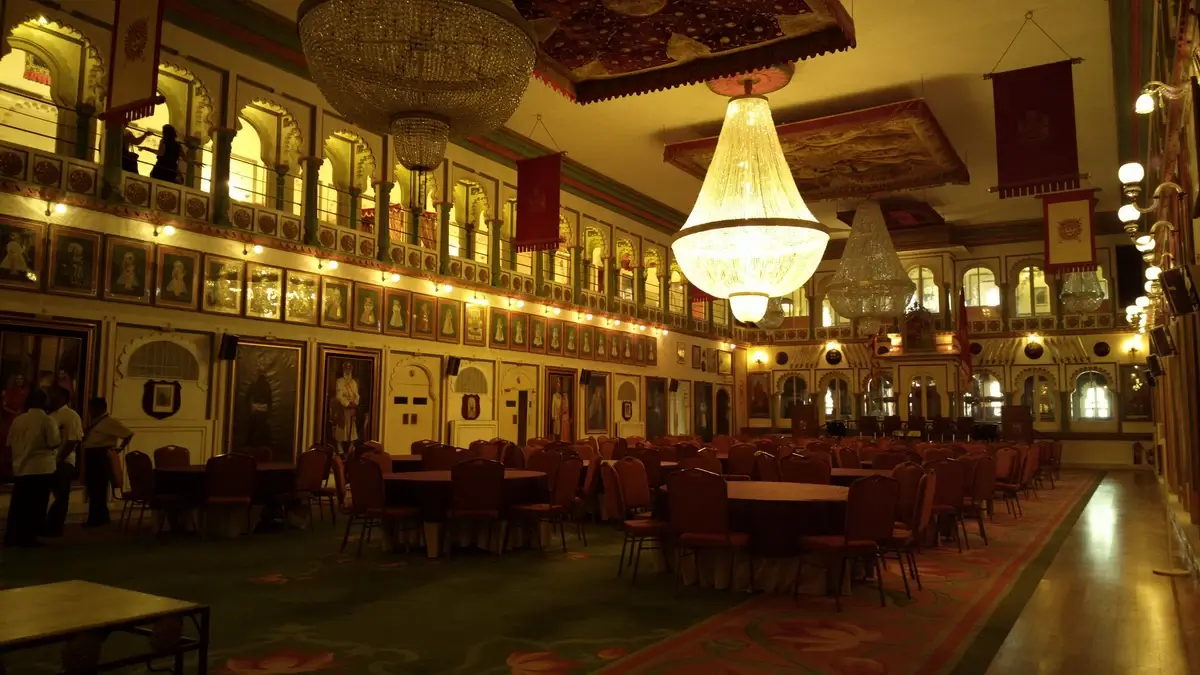
Mayuri (Chani) Mehrotra / Flickr
21. The Vintage Car Museum: A Nostalgic Ride
Udaipur’s Vintage Car Museum is more than just a garage; it’s a time capsule. The museum is home to an exquisite collection of vintage automobiles, some dating back to the early 20th century. Among the stars of the collection is a 1934 Rolls Royce Phantom, which was used in James Bond’s “Octopussy.”
These cars aren’t just for show; they’re well-maintained and even taken out for an occasional spin. It’s a living museum that revs up both history and the engines of these classic beauties.
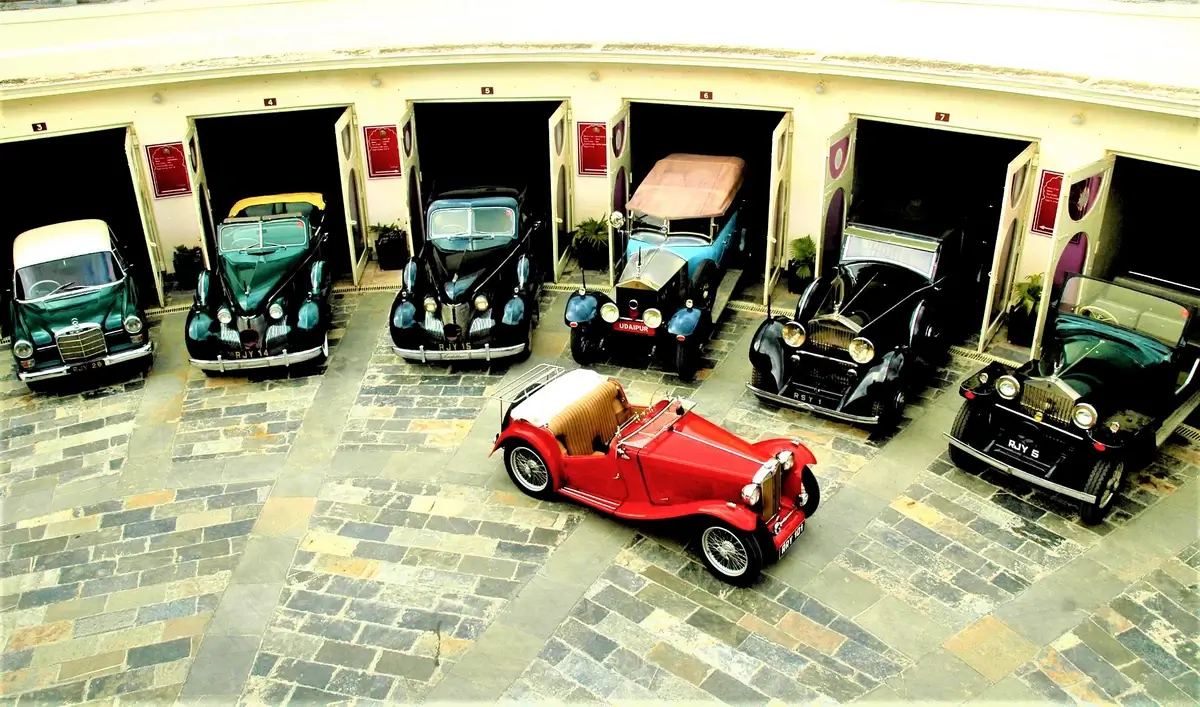
Image source: udaipurian.com
22. Saheliyon-ki-Bari: The Garden of Maidens
Saheliyon-ki-Bari, often translated as the “Garden of Maidens,” is a beautiful garden adorned with fountains, kiosks, and a delightful array of flowers. Built in the 18th century by Maharana Sangram Singh, it was initially intended as a peaceful retreat for the queen and her maids.
The garden features multiple pools, marble pavilions, and even a delightful lotus pool. Historically, it’s said that the King designed this garden himself, paying attention to every minute detail. It’s an enchanting mix of natural beauty and royal aesthetic.

Image source: Wikimedia Commons
23. Badi Lake: The Less Known Beauty
You may have heard of Lake Pichola or Jaisamand Lake, but have you ever heard of Badi Lake? Situated about 12 km from the main city, this lesser-known reservoir was constructed in 1691 by Maharana Raj Singh I. The purpose? To counterbalance the devastating effects of famine.
Despite its functional origins, Badi Lake is nothing short of picturesque, offering magnificent views of the surrounding hills. Local legends even say the lake is haunted, adding an air of mystique to its already captivating presence.
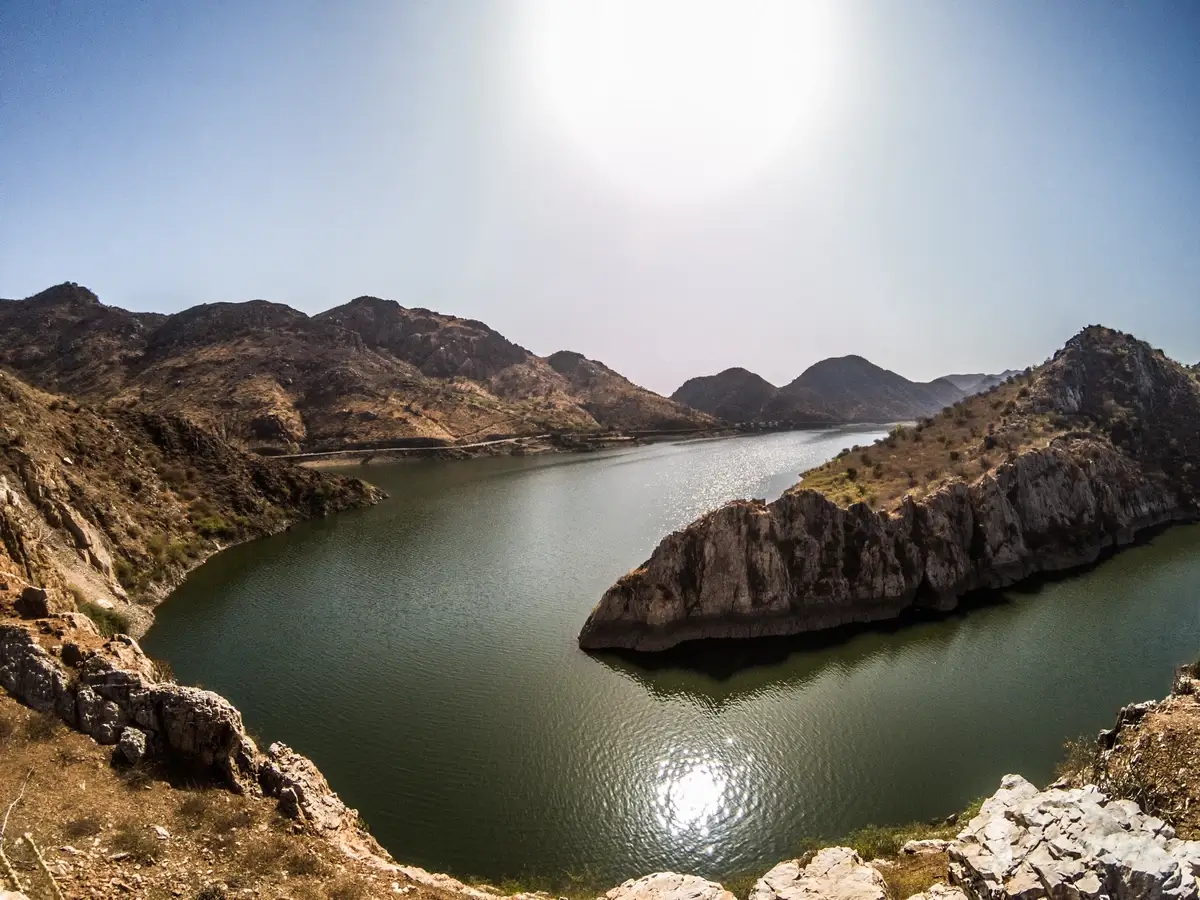
Manvendr Singh / Flickr
24. The Udaipur World Music Festival: Music Without Borders
Every year, music lovers and artists from around the globe converge on Udaipur for the Udaipur World Music Festival. Initiated in 2016, the event promotes the idea of music as a medium that knows no borders. Genres range from Jazz and Classical to Flamenco and Afrobeat.
The festival usually spans three days and attracts over 50,000 attendees each year. It’s not just about music; it’s about cultural exchange, collaboration, and a celebration of humanity’s artistic spirit.
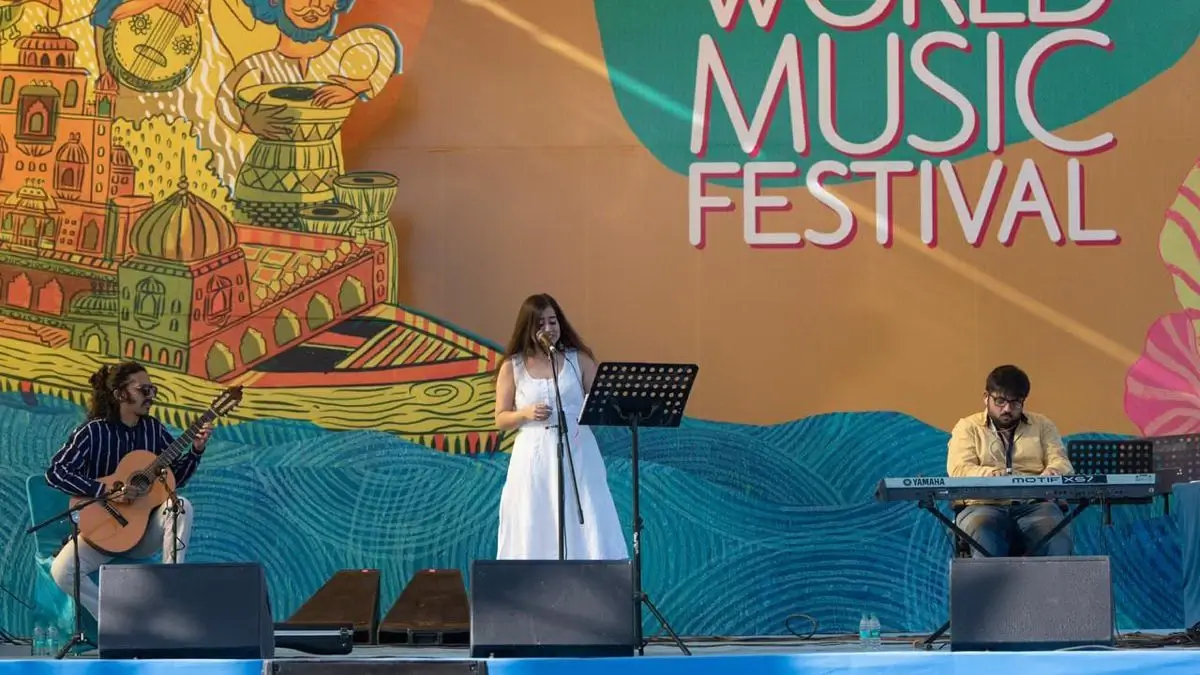
Image source: thetimesofudaipur.com
25. Temples Galore: The City’s Spiritual Side
Udaipur is not just palaces and lakes; it’s a spiritual sanctuary filled with numerous temples. The most famous among them is the Jagdish Temple, built in 1651. But that’s just the tip of the spiritual iceberg. There are many smaller temples scattered throughout the city, each with its own unique history.
These temples serve as community centers, places of worship, and historical landmarks. For example, the Eklingji Temple dates back to 734 AD and is considered one of the oldest continuously worshiped Hindu temples.

Image source: Wikimedia Commons
26. Women Entrepreneurs: Empowerment Through Crafts
When you think of Udaipur, traditional crafts like miniature paintings or marble art might come to mind. But did you know that a significant portion of these crafts are made by women entrepreneurs? Organizations like the Self-Employed Women’s Association (SEWA) have been instrumental in this empowerment.
Through their crafts, these women not only preserve traditional art forms but also generate income for their families. According to a 2018 survey, approximately 30% of craft businesses in Udaipur are owned and run by women.
27. The Puppets: Strings Attached in Udaipur
Puppetry isn’t just a children’s pastime in Udaipur; it’s a cultural heritage that dates back hundreds of years. Rajasthan is famous for its traditional “Kathputli” (puppet) shows, and Udaipur is no exception. The art form is so deeply ingrained in the city’s culture that there’s even a puppet museum, the Bharatiya Lok Kala Mandal, which was founded in 1952.
These puppet shows aren’t just entertainment; they serve as a medium for storytelling, often covering historical tales or moral stories. According to a 2017 study, around 20% of local artists in Udaipur are involved in puppetry, making it a significant cultural export.
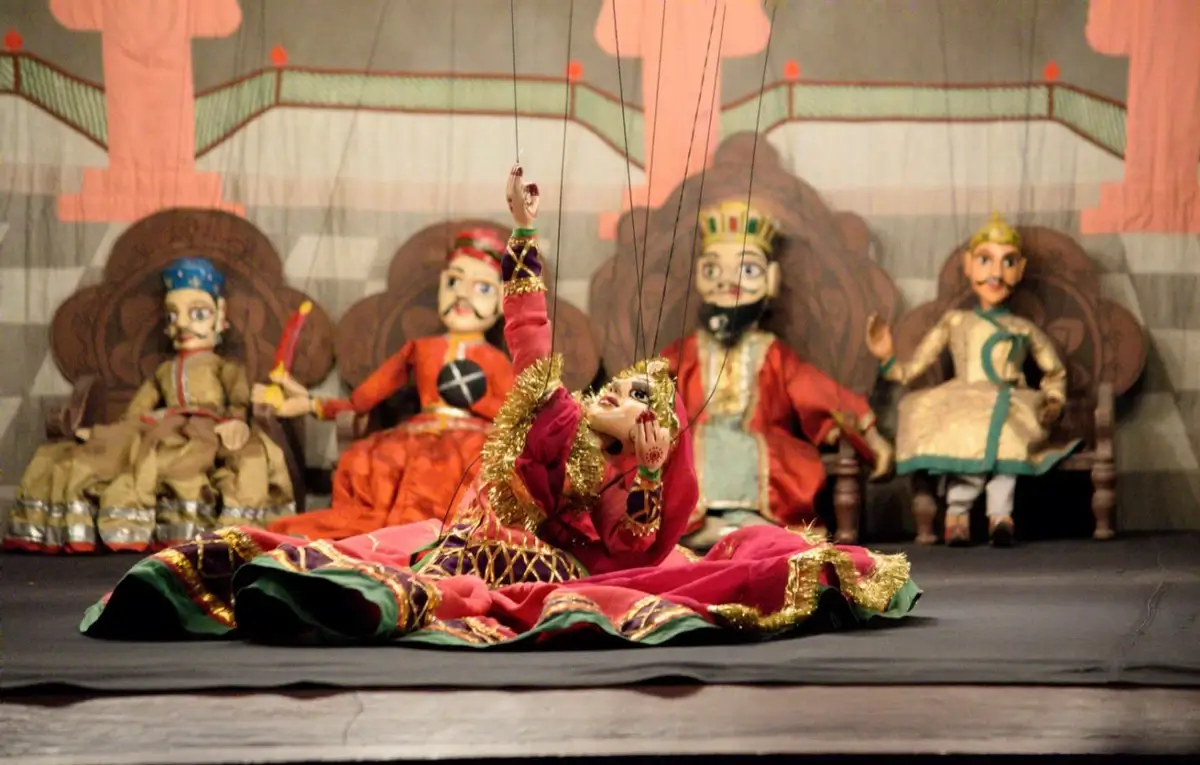
Image source: commonerscauseway.com
28. Poverty in Udaipur: The Struggle Behind the Glamour
While Udaipur is often touted for its royal heritage and scenic beauty, the city also grapples with poverty. According to the Rajasthan Economic Review, the state has a poverty rate of about 14.71% as of 2020, and Udaipur is not an exception. Many families still live in slums and struggle to meet basic needs like food, shelter, and education.
Organizations and the government are striving to alleviate poverty through various schemes like the ‘Bhamashah Yojana,’ aimed at empowering women financially. However, the stark contrast between the affluent and the impoverished remains a less-discussed aspect of this otherwise glamorous city. This might not be a fun fact, but it’s an important one to know.
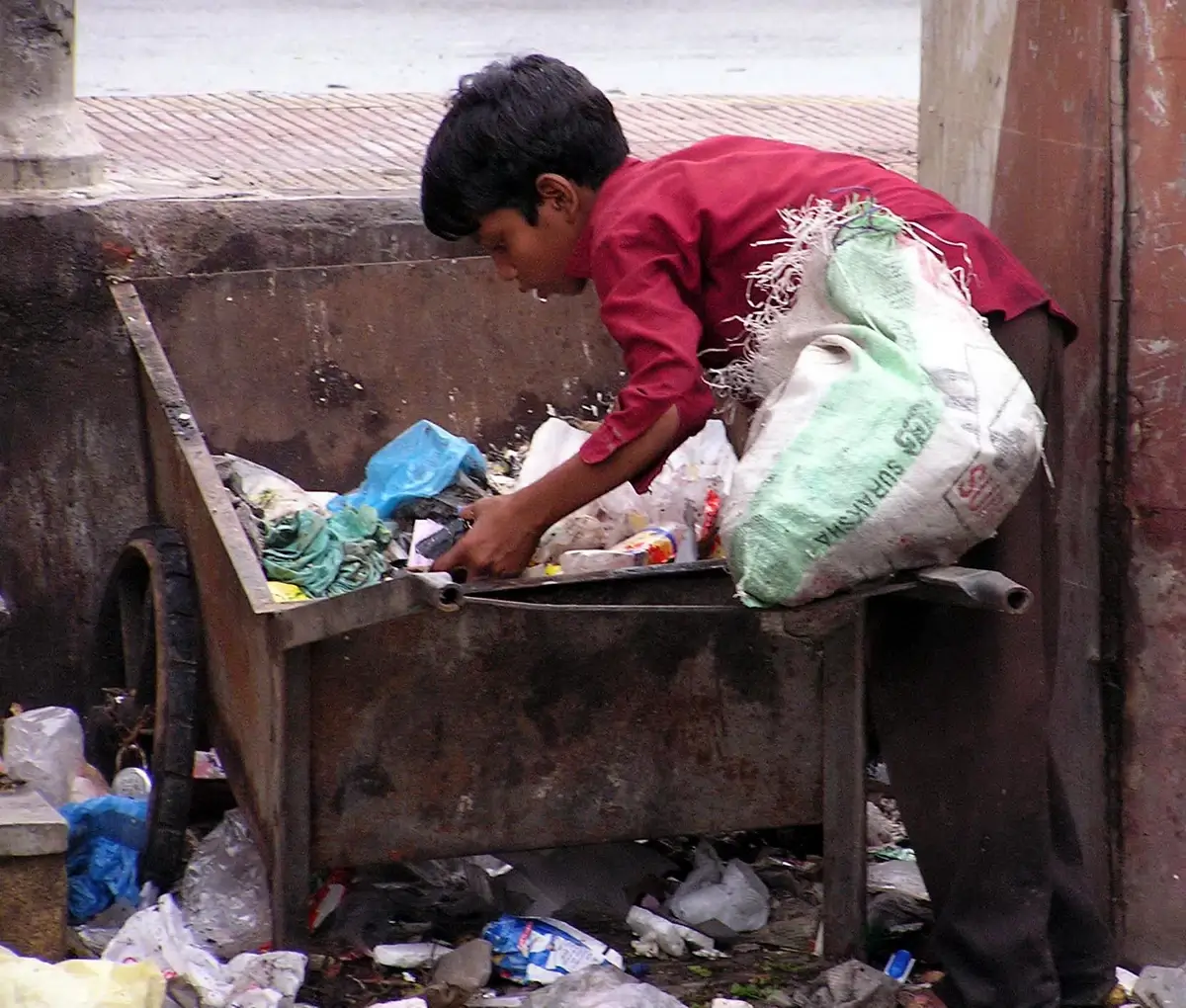
Henrik Bennetsen / Flickr
29. Gangaur Ghat: A Spot for Spiritual Soothing
Known as a spiritual haven, Gangaur Ghat is a popular spot for rituals and ceremonies. The ghat was built in the late 17th century and has been a vital part of the city’s religious landscape ever since. It’s especially crowded during the Gangaur Festival, which usually takes place in March or April.
Devotees from all over the country flock to Gangaur Ghat to participate in ceremonies or simply to soak in the serene atmosphere. According to local authorities, around 10,000 people visit the ghat during the peak season of religious festivals.
30. Shopping Spree: The Best Places to Shop
Shopping in Udaipur is more than just a transaction; it’s an experience. Bapu Bazaar, founded in the early 20th century, is a classic example. This marketplace offers everything from traditional Rajasthani clothing to intricate jewelry. But if you’re into more modern fare, the Celebration Mall, inaugurated in 2011, might be more your speed.
What’s more, Udaipur has a robust market for antiques, thanks to its rich history. A survey in 2019 revealed that about 15% of tourists specifically visit the city for its unique shopping experiences.

Image source: holidify.com
31. Water Crisis: Udaipur’s Ongoing Struggle
Though renowned for its lakes, Udaipur has been grappling with water scarcity for years. This might seem paradoxical, but the problem is rooted in a combination of factors: erratic rainfall, over-extraction of groundwater, and increasing population. According to a 2019 report by NITI Aayog, Udaipur is one of the cities at risk of running out of groundwater by 2030 if conservation measures aren’t ramped up.
Locals have initiated several water conservation projects and the government is also stepping in, but the challenge remains significant. With tourism being a major income source, the water crisis also poses a threat to the city’s economy.
32. Traditional Dance: Ghoomar Takes the Stage
When it comes to dance, Udaipur has its own distinct flair. Ghoomar is a traditional folk dance that originated from the Bhil tribe, and it has become a cultural symbol for Rajasthan. It’s not just a dance; it’s a celebration often performed during weddings, festivals, and other significant occasions.
The dance form gained international fame when it was featured in the UNESCO’s list of Intangible Cultural Heritage in 2010. In Udaipur, Ghoomar performances are common and serve as a fascinating cultural spectacle for tourists.
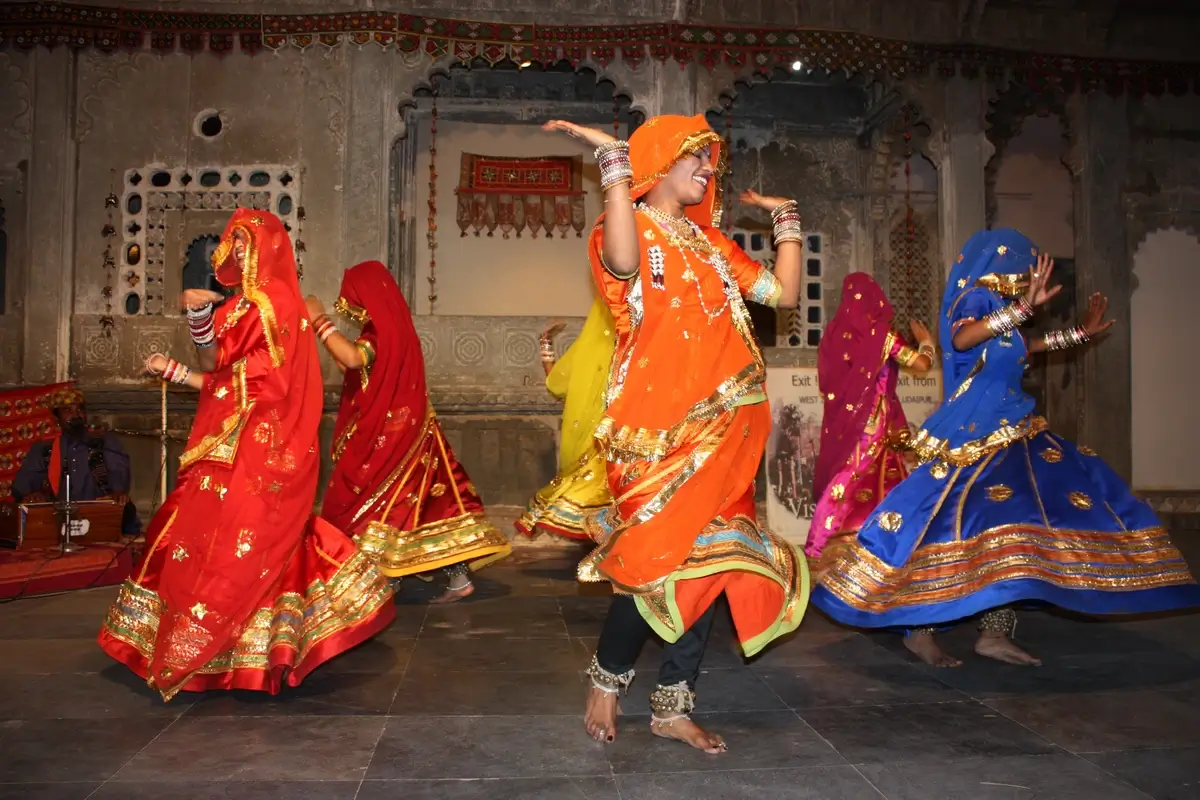
Arian Zwegers / Flickr
33. The Mewari Language: More Than Just Words
Language is a cornerstone of any culture, and Udaipur is no exception. The Mewari language, a dialect of Rajasthani, is predominantly spoken here and serves as an identity marker. Interestingly, Mewari has been around for nearly a millennium, with its earliest written records dating back to the 11th century.
While Hindi and English are commonly understood, Mewari remains the heart and soul of local communication. A 2022 study found that around 80% of Udaipur’s local population speaks Mewari, emphasizing its significance.
34. Rainfall Records: Udaipur’s Tryst With Monsoon
Udaipur isn’t just the city of lakes; it’s also a city that receives quite a bit of rainfall. According to the India Meteorological Department, the city records an average annual rainfall of about 637 mm. Interestingly, Udaipur’s precipitation levels can affect the water levels in its famous lakes, particularly Lake Pichola and Lake Palace.
Monsoons usually arrive in late June or early July and last till September. This period turns the city into a lush landscape, making it a favorite among photographers and nature lovers.
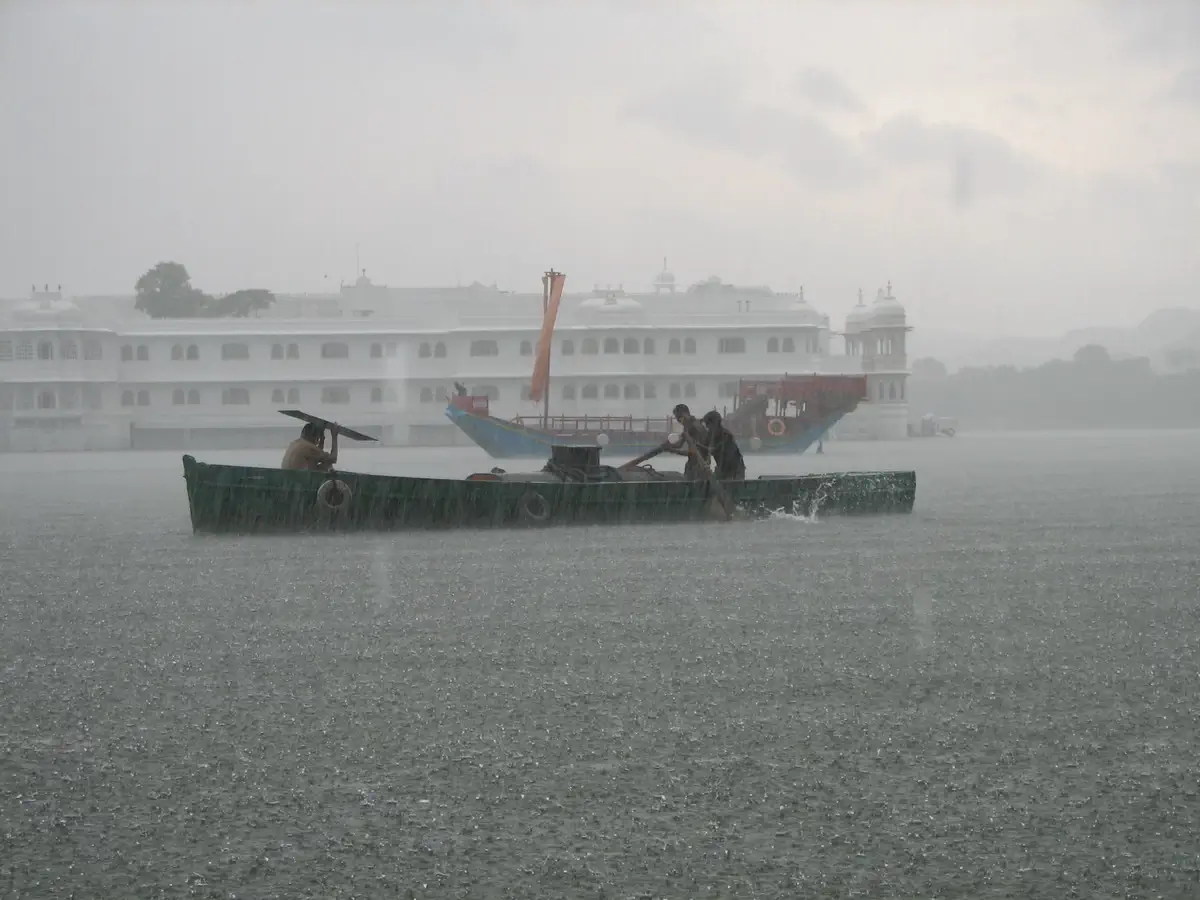
McKay Savage / Flickr
35. Udaipur’s Mewari Cuisine: Spice and Everything Nice
Mewari cuisine is Udaipur’s culinary pride, known for its rich flavors and use of local ingredients like millet. One of the unique aspects of Mewari food is the art of cooking in clay pots, which gives the food a distinct flavor. Dishes like ‘Dal Baati Churma’ and ‘Gatte ki Sabji’ are local favorites.
In a survey conducted by the Rajasthan Food Tourism board in 2020, Mewari cuisine was voted among the top 5 must-try cuisines in Rajasthan by foreign tourists.
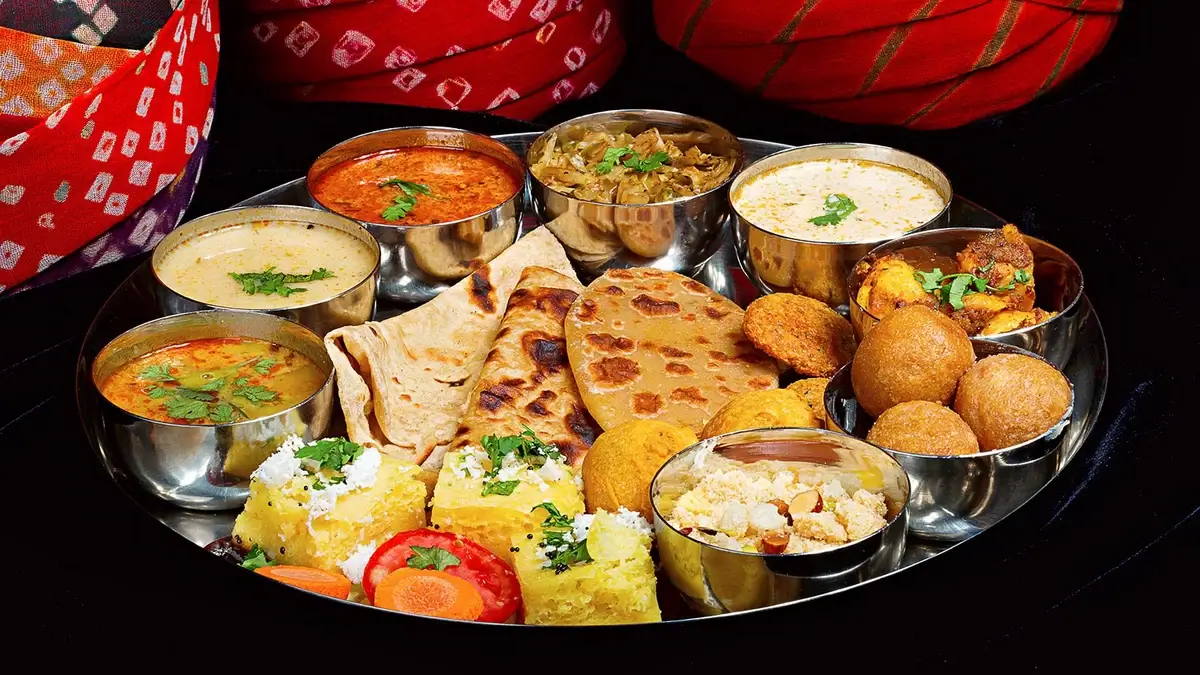
Image source: zeezest.com
FAQ
Why was Udaipur famous?
Hey, so Udaipur’s claim to fame is its spectacular lakes, grand palaces, and intricate temples. I mean, the place is often called the “Venice of the East,” and for good reason. It’s like stepping into a postcard. Whether it’s the gorgeous Lake Palace that seems to float on Lake Pichola or the panoramic views from the City Palace, Udaipur makes you feel like you’re in some sort of royal fantasy. Plus, it’s a hotspot for destination weddings. You know, the whole “I do” with a palace backdrop kinda thing!
How did Udaipur get its name?
Alright, history lesson time. Udaipur was founded by Maharana Udai Singh II in 1559. See where this is going? Yep, the city got its name from him—Udai + pur, where “pur” usually means “city” in Sanskrit. So, Udaipur is basically Udai’s city. How’s that for leaving your mark, huh?
What is Udaipur popularly known as?
Udaipur has been dubbed the “Venice of the East” and also the “City of Lakes.” When you visit, you’ll get why. Lakes everywhere, and the architecture and layout kinda give you this European vibe. It’s like Venice and India had a baby, and that baby is Udaipur.
What is the old name of Udaipur?
Before it was Udaipur, the area was known as “Ayad” or “Ayadpura.” It was part of the Mewar kingdom, but it wasn’t nearly as snazzy back then. Maharana Udai Singh II really put it on the map when he chose it as the new capital of his kingdom.
What is the nickname of Udaipur city?
Apart from “Venice of the East,” Udaipur is sometimes referred to as the “White City” because of its predominantly white-marble architecture. It’s all part of that fairy-tale aesthetic the city has going on.
Is Udaipur called Blue City?
Nah, you’re mixing it up with Jodhpur, another city in Rajasthan. Jodhpur’s the one that’s often called the “Blue City” because of its blue-painted houses. Udaipur is all about lakes and white-marble splendor.
What is the culture of Udaipur?
Udaipur’s culture is like a rich tapestry. You’ve got music, dance, festivals, art—pretty much the full cultural package. The locals take immense pride in their Rajput heritage, so you’ll see a lot of traditional attire and customs. And the cuisine? Let’s just say, if you have a sweet tooth, you’re in for a treat. The place is also famous for its miniature paintings and handicrafts. Basically, it’s a cultural feast for the senses.
Who is the king of Udaipur?
Historically, the Mewar royal family was the big cheese in Udaipur. Arvind Singh Mewar is currently the head honcho of the family. Just a heads-up, though: India’s a democracy these days, so he’s not wielding any official powers or anything. But, he’s still seen as the symbolic keeper of the Mewar heritage and definitely has a VIP status in Udaipur.
Which celebrities visited Udaipur?
Man, Udaipur’s like a magnet for celebrities. Hollywood, Bollywood, you name it. Stars like Nicole Kidman, Mick Jagger, and a bunch of Bollywood biggies have been spotted here. And let’s not forget the Ambani wedding that pretty much brought together every celeb in India. Udaipur’s a hotspot for celebs looking for some luxury and inspiration.
Is Udaipur most beautiful city in the world?
Now that’s subjective, isn’t it? For some people, absolutely, it’s paradise on Earth. The combo of lakes, palaces, and that old-world charm is just irresistible. But “the most beautiful city in the world” is a big title, and there are plenty of cities that could vie for it. Let’s just say, if you’re into romantic, scenic spots, Udaipur’s gotta be on your list.


